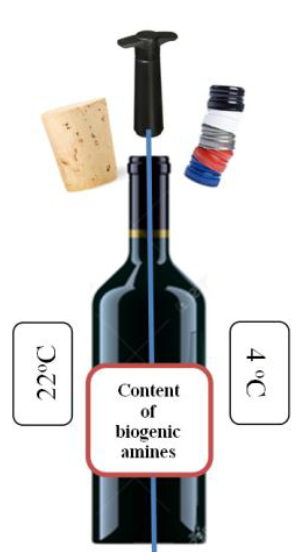1) Background: A survey of biogenic amines profile in opened wine bottles has been established. Opened bottles of red and white wine were submitted to different temperature as well as different kind of stopper (screw cap, cork stopper) and use of vacuum devices. A total of six wine made from different variety of grapes were obtained from Polish vineyard places in different region of Poland; 2) Results: DLLME-GC-MS procedure for biogenic amines determination was validated and applied for wine samples analysis. The total content of BAs in white wines ranged from 442 µg/L to 929 µg/L, while in red wines ranged from 669 µg/L to 2244 µg/L the set of just opened wine samples. The most abundant biogenic amines in the six analysed wines were histamine and putrescine; 3) Conclusion: Considering the commercial availability of the analysed wines, there was no relationship between the presence of biogenic amines in a given wine and their availability on the market. However, it was observed that the different storage conditions employed in this experiment affect not only the biogenic amines profile, but also the pH. The results were confirmed by chemometric analysis.

